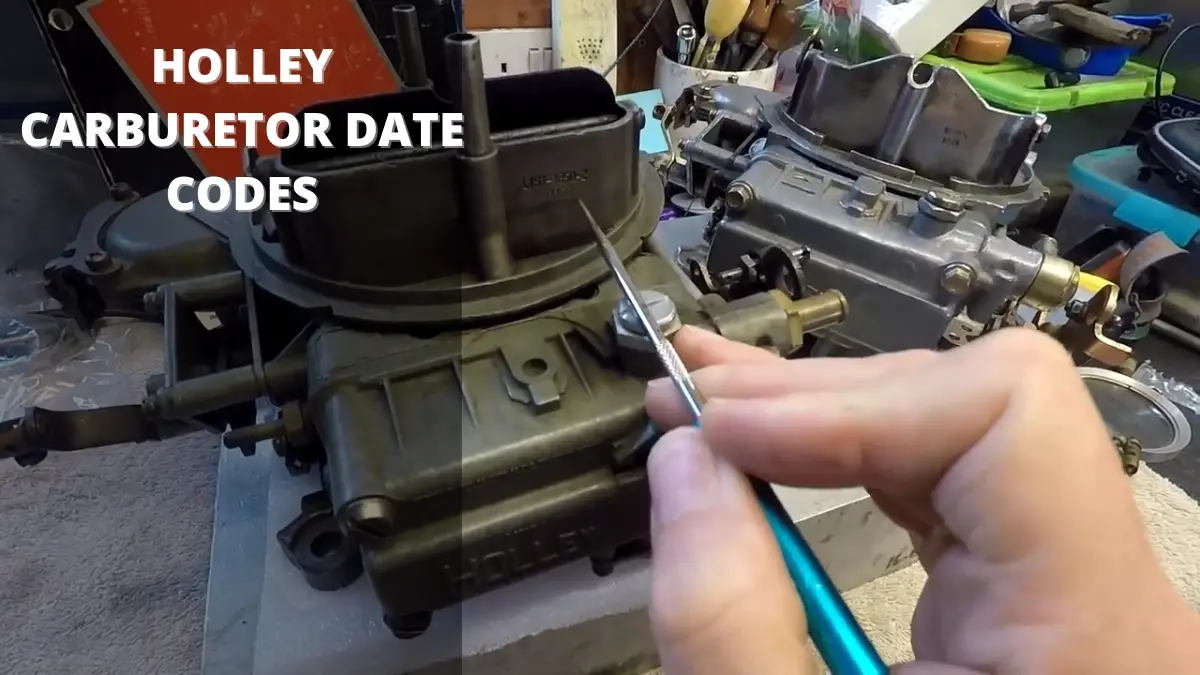To decode the date code on a Holley carburetor, you will need to locate the date code stamped on the carburetor and then decipher it. Holley carburetors typically have a four-digit date code stamped on the choke horn or airhorn area, near the list number. Here’s a step-by-step guide on how to decode the date code:
- Locate the date code: Find the four-digit code stamped on the choke horn or air horn of the carburetor, near the list number. The list number is usually a four- or five-digit number that identifies the specific carburetor model.
- Understand the date code format: Holley carburetor date codes follow a specific format: the first three digits represent the day of the year, and the last digit represents the year. The format is as follows:YDDDWhere:
- Y is the last digit of the year
- DDD is the day of the year (001 to 365)
- Decode the year: The last digit of the date code represents the year. For example, if the last digit is “3,” the carburetor could have been produced in 1973, 1983, 1993, or 2003. You may need to consider other factors, such as the carburetor’s overall design and the vehicle it came from, to determine the correct decade.
- Decode the day of the year: The first three digits represent the day of the year, with “001” being January 1st and “365” being December 31st (or “366” in a leap year). Use a calendar or an online day-of-the-year calculator to determine the exact date.
- Put it all together: Once you have decoded both the year and day of the year, you can determine the exact production date of the Holley carburetor.
For example, if the date code is “1234,” it means the carburetor was manufactured on the 123rd day of a year ending in “4” (e.g., 1974, 1984, 1994, or 2004).
Keep in mind that this method only works for Holley carburetors with a stamped date code. Some older models may not have this information or may require additional research to accurately determine the production date.
If you’re looking to further understand your Holley carburetor, beyond the production date, you can also decode other information from the list number and stampings found on the carburetor.
- List number: The list number is a four- or five-digit number that identifies the specific carburetor model. This number can typically be found stamped on the choke horn or airhorn of the carburetor. By referencing this number, you can identify the carburetor’s CFM rating, its intended application, and any unique features.
- Revision code: Next to the list number, you may find a revision code, usually represented by a single letter (e.g., A, B, C, etc.). This code indicates revisions or modifications made to the carburetor model. Higher letters represent later revisions.
- Carburetor identification tag: Some Holley carburetors have a small metal tag attached to one of the screws securing the bowl. This tag can provide additional information about the carburetor, such as the part number, application, and production date.
Once you have gathered all the information from your Holley carburetor, you can use this information to identify the specific model, application, and production date. This can be helpful when ordering replacement parts, troubleshooting issues, or simply learning more about your carburetor’s history.
There are numerous online resources, forums, and guides that can help you decode and better understand your Holley carburetor. These resources can provide valuable insights, tips, and troubleshooting advice for maintaining and optimizing your carburetor’s performance.


